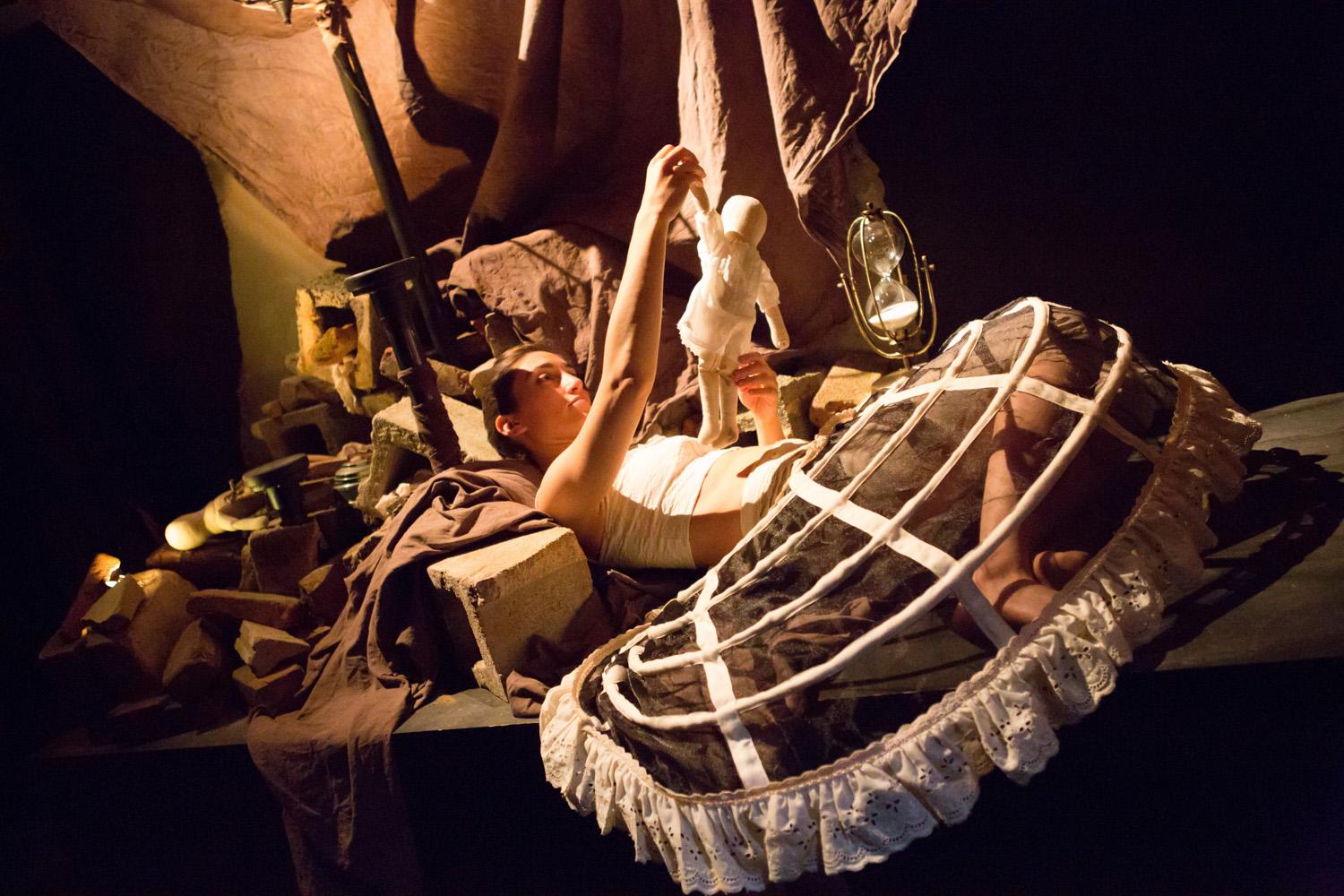In “Healing Wars,” a new performance commissioned by the George Washington University, there is a scene in which a veteran recounts the grisly car collision that caused him to lose his right leg. He and a friend had visited a café while deployed in Bahrain, but they left after noticing a menacing group of locals eyeing them. As they sped back to their military base, a vehicle slammed into theirs—leaving one man dead and the other’s leg battered.
The story is the true account of what happened to Paul Hurley, the actor onstage during the vignette. Before becoming a performer, Mr. Hurley served in the U.S. Navy as a gunner's mate in Bahrain. He recites his monologue in "Healing Wars" while wearing an outfit that shows off his amputated limb and describes the haunting aftermath of his injury: endless surgeries and hospital visits, an ever-present ghost pain and constant memories of the blood-soaked accident scene.
“What are the meds for that?” he asks.
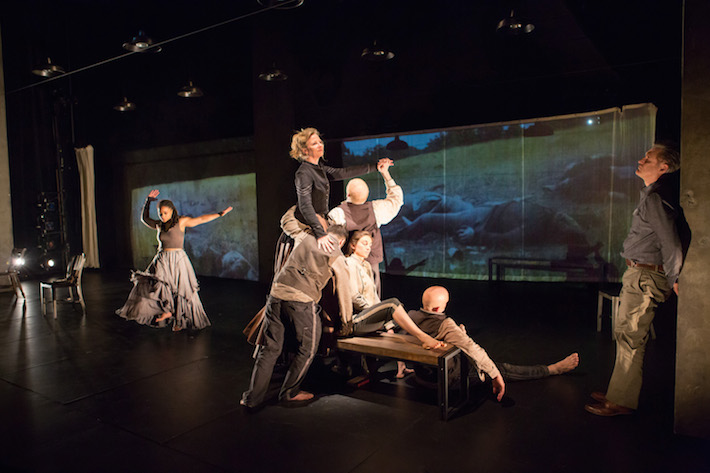
The company of "Healing Wars" at Arena Stage. Photo by Teresa Wood.
“Healing Wars” doesn’t try to answer this question, but explores broadly what it means to “heal” after the trauma of combat. The dance performance was choreographed by 2002 MacArthur fellow Liz Lerman, M.A. '82, and premiered at Arena Stage Thursday.
"Healing Wars" is the first of three plays being produced as part of the National Civil War Project, a multiyear collaboration that has partnered four universities with five arts organizations to commemorate the 150th anniversary of the war. The project has joined the Alliance Theatre with the Emory College Center for Creativity & Arts and Emory University; the Baltimore Centerstage with the University of Maryland’s Clarice Smith Performing Arts Center; and the American Repertory Theater with Harvard University. GW teamed up with Arena Stage to bring "Healing Wars" to the public.
“It’s been overwhelming to realize that something with such a small beginning has blossomed and become truly astounding,” President Steven Knapp said at Thursday’s opening. “I would say that what this shows once again is that the arts help us make sense of what we can’t make sense of.”
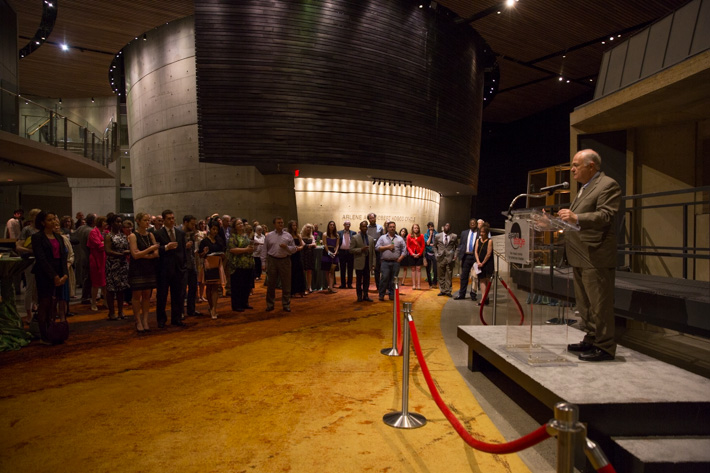
President Knapp gives remarks at the "Healing Wars" opening. Photo by William Atkins.
Ms. Lerman began thinking about untold stories of combat a few years ago. Research on women in the conflict—especially those who worked as nurses and healers—piqued her curiosity, and she sought to understand how the Civil War influenced modern-day warfare.
“I was thinking about how much our Civil War still impacts us today and how unfinished it can feel, and I wondered about that in relation to what were then our very active wars in Iraq and Afghanistan,” she said.
Her questions opened a Pandora’s box of sorts, indicated by the complex stories that make up the piece. “Healing War” transports its audience between the Civil War and recent fights in the Middle East more than a century later. The show’s strength lies in a small but powerful cast of eight performers, who interpret the cost of war from every angle as they take on the roles of damaged veterans, disillusioned doctors and heartbroken family members.
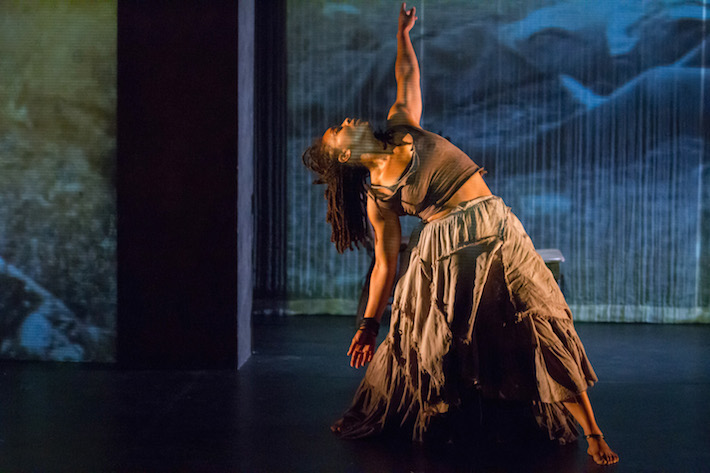
Samantha Speis dances in "Healing Wars." Photo by Teresa Wood.
Ms. Lerman spent three years conducting research for the performance. She enlisted the talent of her long-time friend Tamara Hurwitz Pullman, a dancer and the wife of actor Bill Pullman. Ms. Pullman mentioned she and her husband had been hoping to collaborate on a project, and soon the Hollywood film star joined the cast. Mr. Pullman sets the tone in a stirring initial scene in which he recounts the carnage suffered by the First Minnesota Volunteer Regiment at Gettysburg. The battle left nearly a generation of men dead.
Dancers thrust to the beat of war drums following Mr. Pullman’s opening scene, their choreography capturing the aggression and chaos of battlefields. Some cast members spent time rehearsing those very moves on GW’s campus, where Ms. Lerman conducted in-studio work, taught classes and led workshops with students.
“Healing Wars” received support throughout GW. The university has committed to veterans’ issues through the GW VALOR program and other initiatives, including a new master’s degree for U.S. Naval Academy leaders. Nina Seavey, director of the Documentary Filmmaking Institute, was so compelled by “Healing Wars” that she began a film tracing the project. The Office of the President provided critical support, as did theater professors Leslie Jacobson and Mary Buckley. Paul Tschudi, assistant professor of health care sciences and counseling, shared his experiences serving in Vietnam and counseling veterans, which helped Ms. Lerman develop themes for her work.
The performance spends its 90-minute runtime studying the physical and psychological scars that wars leave on soldiers and their families. A snippet titled “Premonition” features a family standing quietly over the backdrop of a blue sky remembering the day they learned their loved one died in combat. Mr. Pullman emerges repeatedly as a doctor, most poignantly when he describes the dichotomy of performing amputations that, although difficult, can save lives.
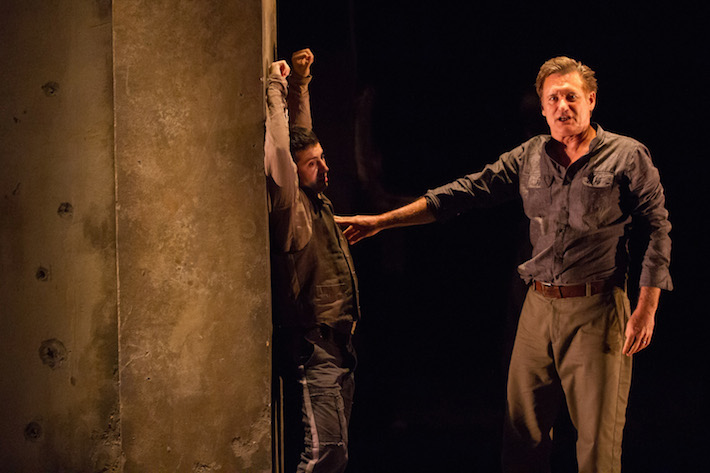
George Hirsch and Bill Pullman take the stage. Photo by Teresa Wood.
“Looking at historic images of the Civil War and seeing all the amputations, I felt an immediate connection to today's conflicts. Medical advances make it possible for people to survive increasingly terrible injuries, but what happens after that?” Ms. Lerman said.
“Healing Wars” will run until June 29. Ms. Lerman explained that she hopes the piece inspires viewers to think about the themes of war and “see what happens.”
“In the theater, I'm not interested in having the audience ‘get’ a particular idea, but I'm hoping that in spending this time with us, they'll allow themselves to have their own questions and feelings,” Ms. Lerman said.



